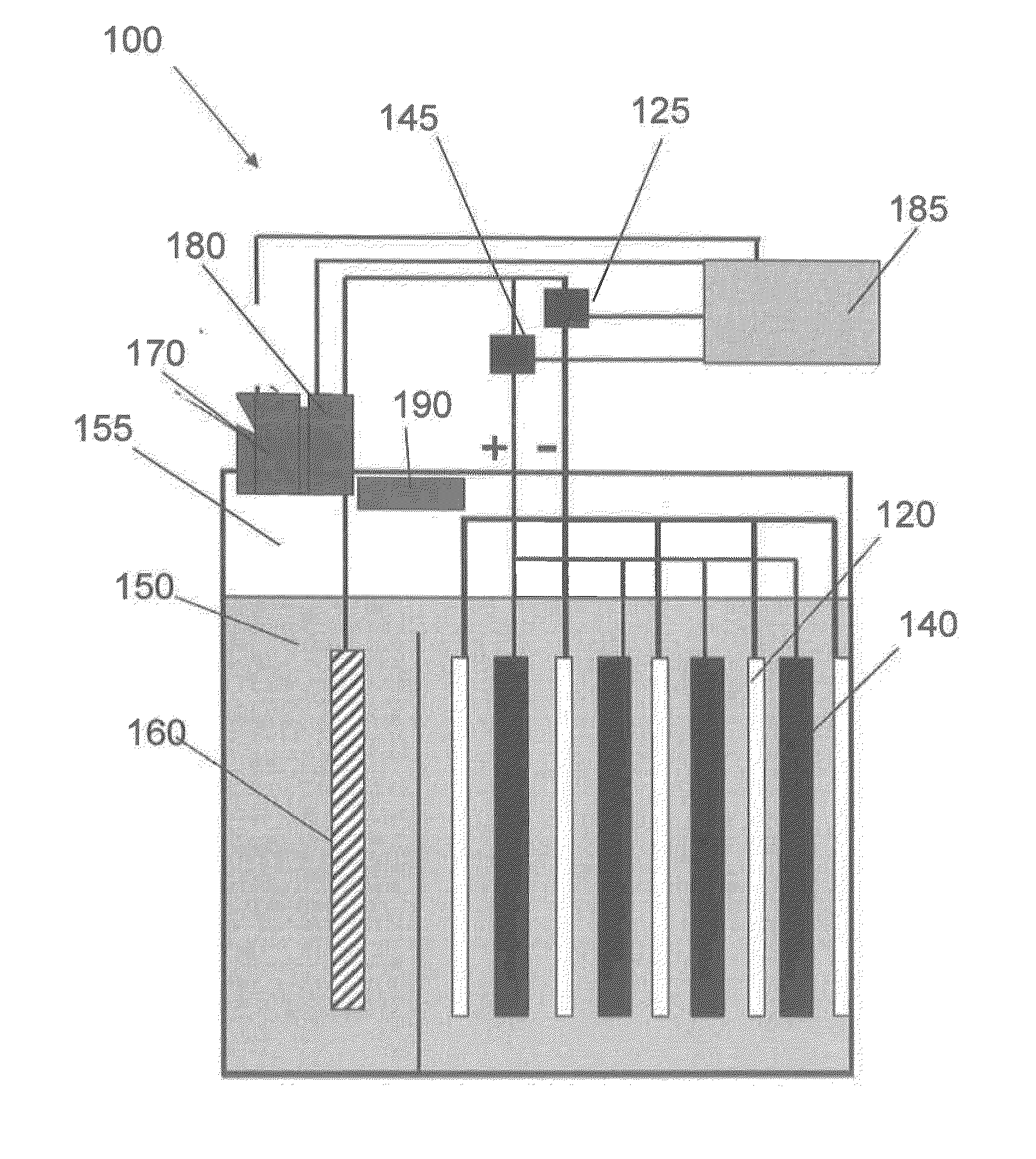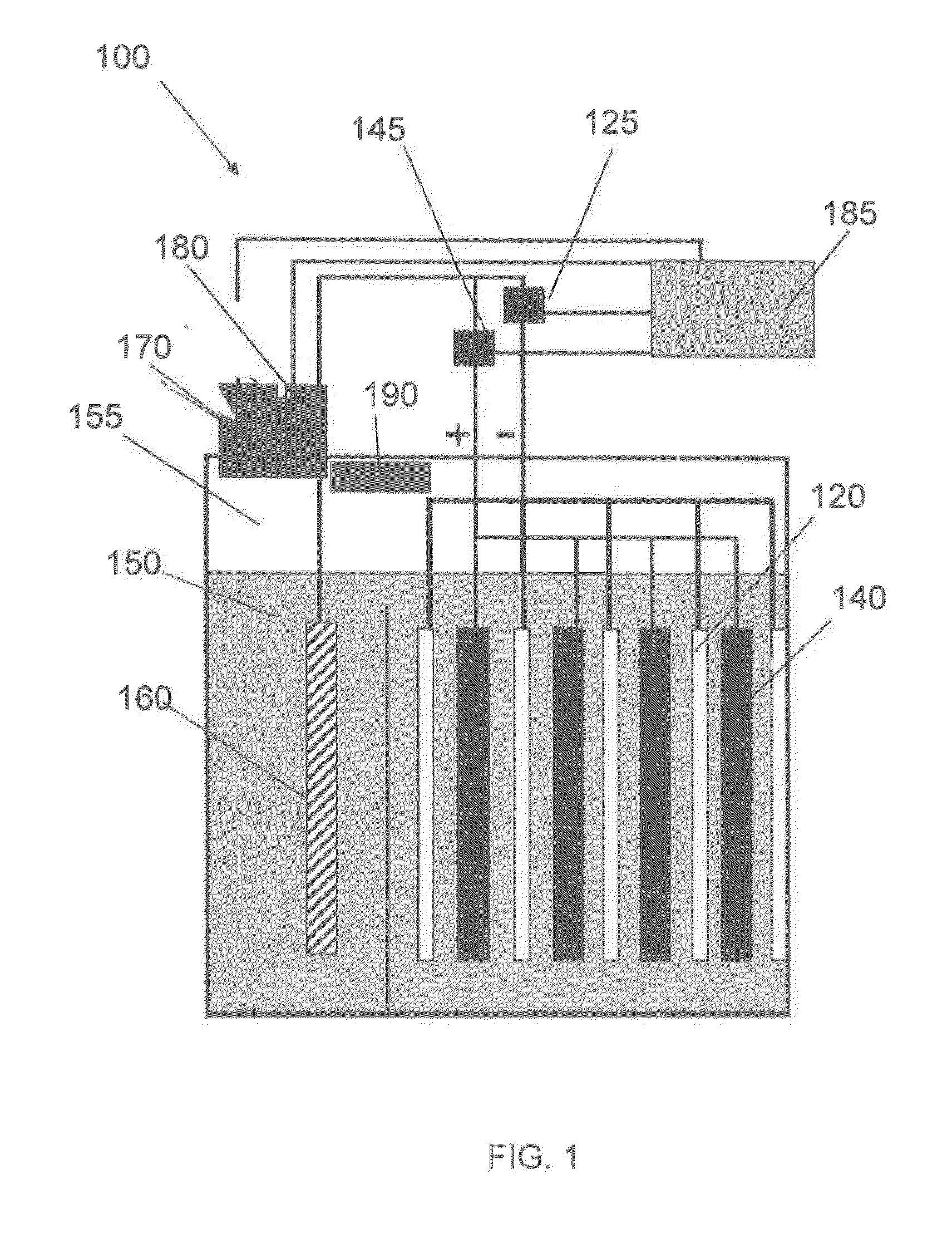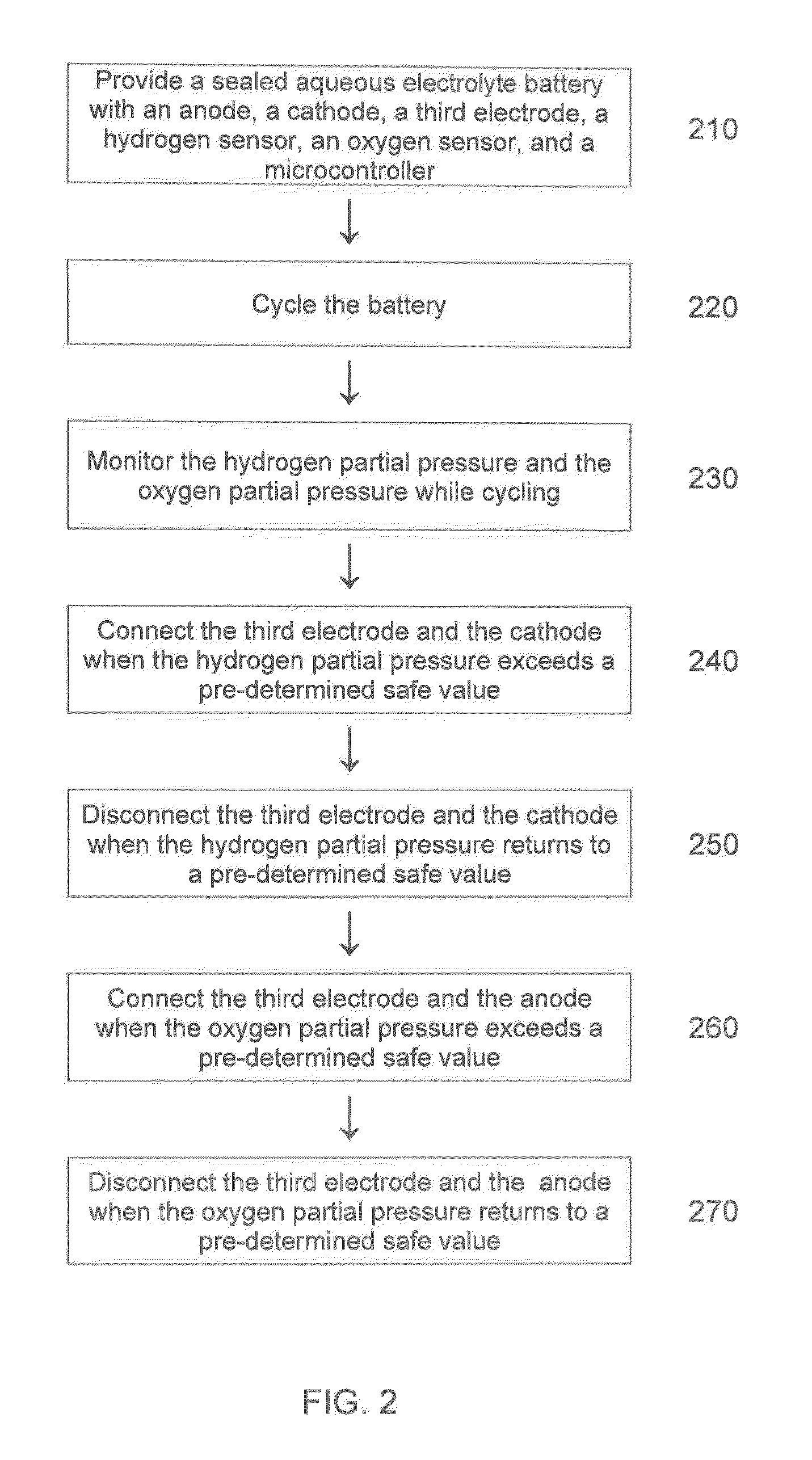Management of Gas Pressure and Electrode State of Charge in Alkaline Batteries
- Summary
- Abstract
- Description
- Claims
- Application Information
AI Technical Summary
Benefits of technology
Problems solved by technology
Method used
Image
Examples
example
[0039]The following example provides details relating to composition, fabrication and performance characteristics of an electrochemical cell in accordance with some embodiments of the present invention. It should be understood the following is representative only, and that the invention is not limited by the detail set forth in this example.
[0040]A 34-Wh prototype battery cell was made from 8 NiOOH cathodes and 9 nickel-sheet anodes, all measuring about 10 cm×9 cm. An aqueous solution of 37% w / w potassium hydroxide and 60 g / L ZnO was used as the electrolyte. The cathodes were separated from the anodes by a 3 mm gap, and a pump forced flow of 0.5 cm / s through the channel formed by the gap. No membrane or separator was used. The sealed cell case was about 17 cm tall×6 cm wide×14 cm long. The third electrode was a single nickel foam sheet of the same size as the other electrodes. The cell was cycled at 95% of its total storage capacity during measurement of the data shown in the graph ...
PUM
 Login to View More
Login to View More Abstract
Description
Claims
Application Information
 Login to View More
Login to View More - R&D
- Intellectual Property
- Life Sciences
- Materials
- Tech Scout
- Unparalleled Data Quality
- Higher Quality Content
- 60% Fewer Hallucinations
Browse by: Latest US Patents, China's latest patents, Technical Efficacy Thesaurus, Application Domain, Technology Topic, Popular Technical Reports.
© 2025 PatSnap. All rights reserved.Legal|Privacy policy|Modern Slavery Act Transparency Statement|Sitemap|About US| Contact US: help@patsnap.com



